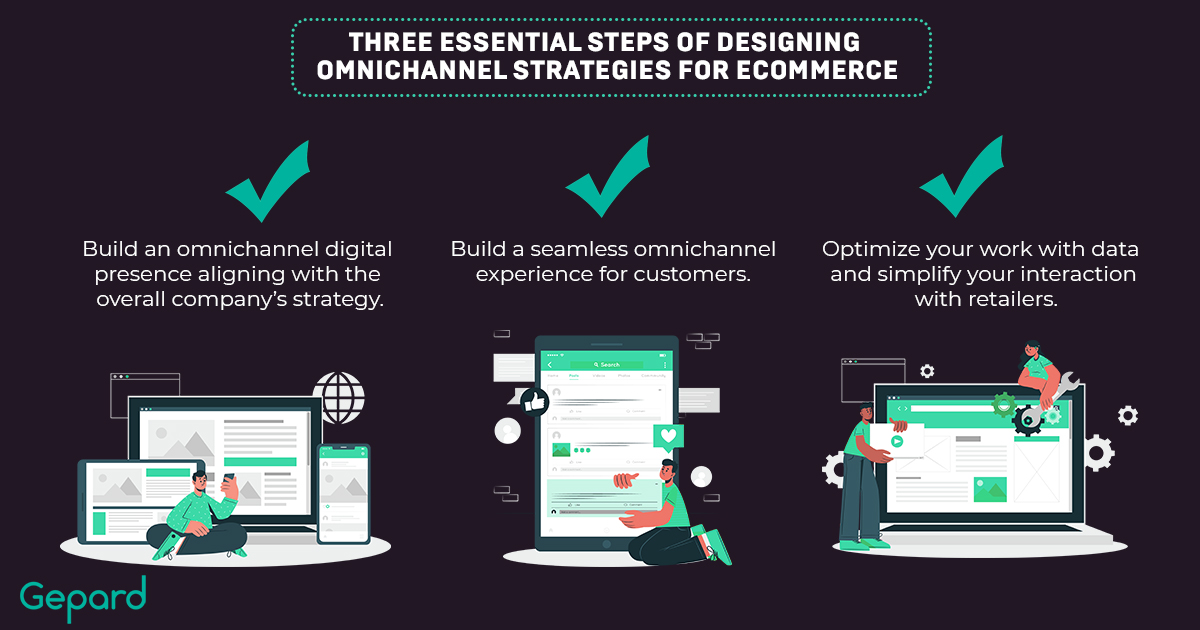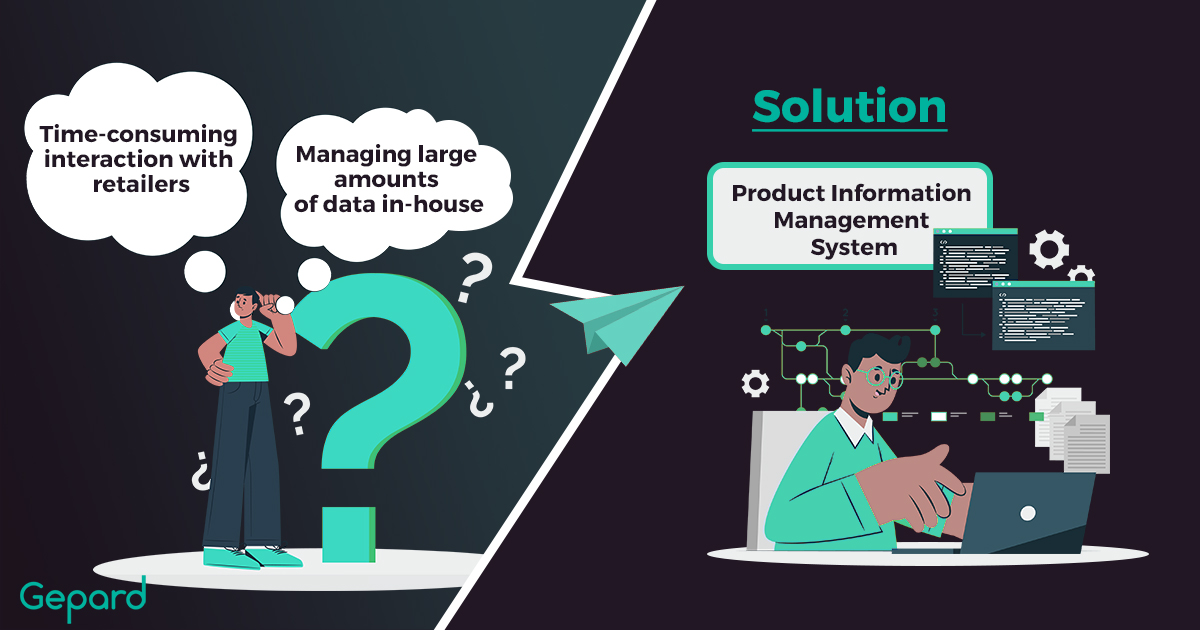Building A Successful Omnichannel Strategy
Life is offering a lot of diversity nowadays. People read varied media, and use all kinds of social platforms. Their tastes differ from each other, and the choices they are making in terms of buyer affinity are much related to their personalities or how they attribute themself to social sub-cultures and groups. Such a shift that people are experiencing makes it difficult and even irrelevant for brands to continue pursuing an oldie-goldie “one-fits-for-all” strategy.
So for businesses that is a big yellow sign: “Follow your customer!”
And that is what it is about the omnichannel strategy. Building a profitable omnichannel strategy should be the primary focus for companies that want to be present on different retailing, social, and communication platforms. By combining the strengths and benefits of multiple sales touchpoints, you can activate buyers typically not reachable to you and boost your brand awareness, deliver exceptional customer reach, and increase sales.
What Is Omnichannel eCommerce
While this term was for a long time associated with brick-and-mortar shopping, omnichannel eCommerce has become widely used for online retailers who want their products to be accessible on different sales and communication channels. It became even more relevant with the Coronavirus Pandemic, which has led to online sales growth.
A profitable omnichannel approach means not only being present at many sales touchpoints but also turning each of those marketplaces into a safe and attractive shopping haven.
Multichannel vs Omnichannel
It’s crucial to tell the difference between multichannel and omnichannel eCommerce. While the first one focuses on your products, the second one revolves around your clients. In multichannel retail, each sales platform is considered a separate and individual shopping opportunity.
On the contrary, omnichannel retail provides integration between sales channels (online and offline) where product distribution, marketing, and communication merge to create a single customer experience.
What Is A Successful Omnichannel Strategy
To start with, it is good to understand in which way a strategy relates to omnichannel at all. Not to give much theoretical stuff, but let us agree on the definition that the strategy is a long-term plan for achieving business goals. Goals are preferably quantified, and long-term (please define yourself), maybe 6 months or 6 years depending on your business.
Now, to build up your long-term plan you have to be aware of your customer’s journeys and where your customers are, so how you could reach them. And that is how you hit the sweet spot: knowing your customer journeys, and understanding there are different segments of customers who have preferences over a variety of marketplaces. Crafting each individual approach for addressing the right segment, at the right place and time, and in the right way, shall be the foundation of your omnichannel strategy.
An effective eCommerce omnichanneling , first of all, implies building a well-crafted master plan. So what is an omnichannel strategy that brings your business to the next level? Here are some of the essential steps of designing omnichannel strategies for eCommerce.

Conduct In-Depth Interviews To Tailor Your Strategy To Each Customer
Your customers should be your inspiration in driving up your strategy. Make sure to place them in focus and run a series of studies using in-depth interviews. There are several frameworks for in-depth interviews, I highly recommend you study some of these and use them. Personally, I prefer JTBD (Jobs-to-be-done) framework. These interviews will help you to segment your clients and identify the places of their presence (marketplaces, retailers, etc).
Focus Digital An Omni Channel Presence Aligning With The Overall Company’s Strategy
Focus on the marketplaces most frequently used by your customers, and invest in those, instead of getting distracted by numerous sales platforms that are not worth a shot. For that, you’ll have to thoroughly study your customer journey, to learn where your existing and potential buyers are eager to shop and how do they learn of products from your category. If you are experimenting with new omnichannel solutions, make sure to analyze and evaluate the results of your brand presence on new marketplaces.
Build A Seamless Omni Channel Experience For Customers
Perfect your buyer experience by turning each of the sales channels into a comfortable place for online shopping and making sure all those platforms can convert. The tone of voice, messaging and visuals should be adapted to match the platform. Enable seamless mobile navigation across those retail channels. Also, adopt customer support across all of the sales channels you use, and make sure your clients can reach the support by every means (e.g. phone calls, emails, chatbox, and so on). Segment your target audience to allow personalized marketing and deliver a unique customer experience by creating targeted offers for your buyers.
Optimize Your Work With Data and Simplify Your Interaction With Retailers Using An Omnichannel Approach
Success in omnichannel eCommerce depends on the consistency and accuracy of the company’s product data. The discrepancy of information on different sales platforms results in the decline of brand trust and poor customer experience. You have to make sure the product information is delivered to the right sales touchpoints, is constantly updated, and aligns with the requirements of respective sales channels.
How Omnichannel Product Information Management System Can Help
To save your buyers from frustration, caused by product data inconsistencies, and to avoid customer loss, businesses consider using omnichannel PIM solutions.
What Is PIM
PIM (Product Information Management) – is software that is used as an exclusive repository to store up, manage, and deliver product information across many sales touchpoints.
How PIM Helps to Build Omni Presence
With an omnichannel product information management solution, your product and customer information will be saved in a single place and available in real-time. Automated PIM workflows allow you to match the data requirements of respective sales channels and provide your customers with always accurate, contextual, and updated information, optimized for the specific channels.
That would not eliminate the need to do creative work like visuals, tone of voice, etc. but that would definitely help to maintain all channel-specific content variants in an appropriate and structured way.

PIM And eCommerce Omnichannel Success
While building an omnipresence you might need to overcome obstacles along the way.
Challenges Of Interacting With Retailers
Working with multiple retailers and marketplaces means that brands and manufacturers have to elaborate on the retailers’ requirements and modify the content, messaging, and visuals accordingly. Managing this manually takes too much time and does not always allow you to stay up-to-date and deliver compelling product data.
Another challenge in getting an omnichannel presence is inventory management. Managing the supply-vs-demand on multiple channels can be overwhelming and lead to overstocking and overselling. Keeping the track of relationships between partners and retailers across various warehouses can be also problematic.
Challenges Of Working With Data Manually
Working with data comes with many challenges. The valued employees spend time on routine & repetitive data-related tasks, such as managing large amounts of datasheets, instead of working on the creative parts of brand and product improvement. The lack of standardization will prevent your products to be easily available on numerous sales channels, so along with implementing content flows consider implementing taxonomy management flows.
Manual data management very often leads to inaccurate results and increased errors that bring about data inaccuracies and cause customer dissatisfaction. The result of this manual data management may be vague data that makes not much of use either for business management or for customers.
Solution: Product Information Management
Here’s where having omnichannel PIM software strengthens your business presence. An omnichannel product information management helps you to easily share product info to retailers, smoothly connect to new sales channels, effortlessly enrich product data, integrate with current ERP solutions, and automatically comply with the ever-changing requirements of different retail platforms.
As a result, the PIM system solves data-related problems, optimizes your business processes, and ensures flawless interaction with numerous retailers.
Consult With Gepard On How To Build A Successful Omnichannel Strategy For Ecommerce Using PIM
More channels – more challenges? Not if you are using PIM that nowadays become an integral part of creating a thriving eCommerce omnichannel plan.
Hand over this task to the Gepard team of 150+ experienced marketers and developers who have been assisting major eCommerce players in the EMEA market for more than 15 years. Rely on our broad expertise in customizing the PIM system to fit any brand/manufacturer omnichannel plan.
Fill in the contact form to discuss your individual business needs with our committed eCommerce specialist – let your brand shine bright on every platform!




